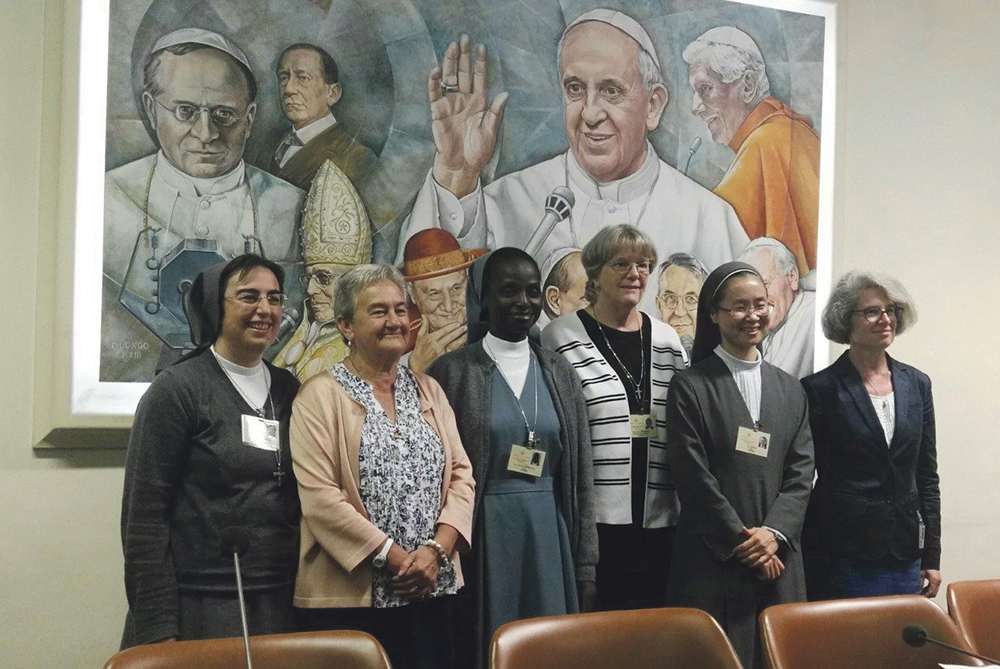WelCom March 2021

The number of women employees in the Vatican is on the rise, according to research carried out by Vatican News for International Women’s Day, 8 March last year. The findings also show the number of women in positions of authority in the Vatican and the Curia has also increased.
International Women’s Day is a global day to celebrate the social, economic, cultural and political achievements of women and to call for accelerating gender parity. Marked annually on 8 March ‘Choose to Challenge’ is the theme for 2021.
In 2010, during the pontificate of Pope Benedict XVI, a total of 4,053 people worked for the Pope, 697 of whom were women, around 17 per cent. In 2019, the Holy See – that is, the Roman Curia with all its offices that help the Pope in the administration of the universal Church – and Vatican City together had a total of 4,618 employees, of which 22 per cent (1016) were women. In 2010 were 385 women were working for the Holy See; in 2019 that number had increased to 649, a rise in the past decade from 17.6 to 24 per cent.
In Vatican City State, the increase in women employees over the ten years has been less evident, apart from one significant exception. In 2016 Pope Francis appointed the Italian art historian Barbara Jatta as director of the Vatican Museums. The appointment caused a sensation in the art world, as no other museum of this size and importance has a woman at the helm. The Papal Collections are among the five most visited museums in the world.
Throughout the Holy See, Pope Francis has appointed more women in top positions. Pope Francis doubled the number of women under-secretaries from two to four. In January 2020, Francesca Di Giovanni became Under-Secretary of State, the highest level of women in the Curia, in a newly created post.
Pope Francis appointed Gabriella Gambino and Linda Ghisoni as under-secretaries at the Dicastery for Laity, Family and Life in 2017. Sr Carmen Ros Nortes works as Under-Secretary at the Congregation for Consecrated Life, where she is the third woman to be appointed to this role; her first predecessor, Enrica Rosanna, was appointed by the late Pope John Paul II in 2004. Until then under-secretaries had always been priests.
At the Vatican Dicastery for Communications where the number of lay people is high compared to other departments of the Holy See, two women hold senior managerial positions. The Slovenian Natasa Govekar is Head of the Theological-Pastoral Department; the Brazilian Cristiane Murray is Vice Director of the Vatican Press Office. At the end of 2019, a total of eight women, along with Francesca Di Giovanni, were in positions of responsibility at the Holy See. Ten years previously there were only three. The number of women in leading positions in the Roman Curia has tripled in ten years.
In total, five of the 22 most important Curia offices – Secretariat of States, Secretariat of Economy, three Dicasteries, nine Congregations, five Councils, three Tribunals – have women on the leadership team. No pope has ever appointed a woman to a top position. The head of an office in the Curia does not necessarily have to be a priest, but in some cases can also be a layperson. Pope Francis demonstrated this in 2018 when he made Paolo Ruffini Prefect of the Dicastery for Communications. The Pope had also signalled openness to appointing a woman as Prefect of the Secretariat of Economy, but in the end he chose a priest – Fr Juan Antonio Guerrero Alves SJ – to succeed Cardinal George Pell.